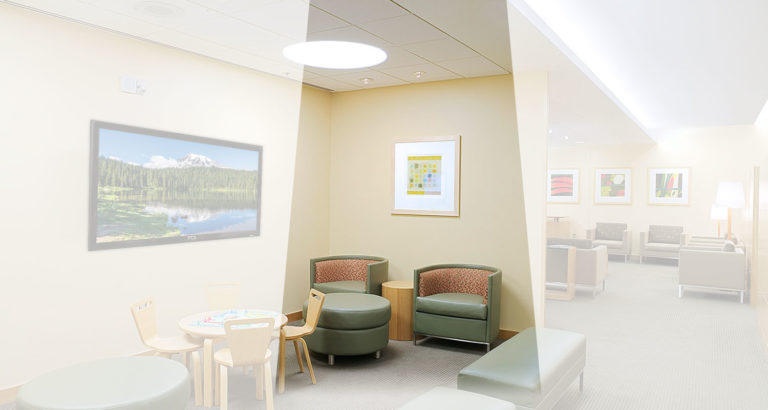Bringing Elements of Sound into the Built Environment to Improve the Patient Experience

When it comes to designing healthcare spaces, the structure of the building is hardly the only consideration. We must also focus on human-centric designs for healthcare in order to create facilities that truly serve patients’ needs. A good place to start is by incorporating all five senses, but today we’re specifically digging into the impact of sound. Here’s a look at how sound and healthcare acoustics play a role in the patient experience.
The Healing Benefits of Sound
There are multiple aspects of sound in a healthcare facility to keep in mind. First, focus on mitigating excessive noise. This can be through the design of certain products, the use of particular materials, or even designing the space to improve the staff workflow (and therefore keep the noise down). The key is to reduce unnecessary sounds that are harsh, disconcerting, or overwhelming.
Second, turn your attention to using sound in order to elevate the human experience. Ask yourself how you can add to the environment through an improved AV system design and better medical audio visual equipment. Can you use soothing music to calm patients prior to surgery? Soundscapes to give a relaxed feeling as they pass the time in a medical room? Upbeat songs to help them get through long waiting periods with a little more enjoyment?
When sound is used as a tool to create a positive environment in a medical facility, patients, their families, and the staff all benefit. Peaceful sounds can even go a long way in contributing to the healing process and to overall positive outcomes.
Sound as a Catalyst for Productivity & Improved Operations
Sound isn’t just something that helps patients; it also can boost performance in a medical facility. All of the alerts and dings from different machines, voices coming from all angles and staff hustling in and out of rooms can create chaos and confusion. Too many alerts may even cause medical staff to become less responsive to the alerts that matter, as all of it can sound like indistinguishable noise after all.
As you go about planning your next healthcare facility, remember these important factors to designing for the human experience. Can you improve the healthcare acoustics in the space, so conversations don’t carry quite as far? Is there alternate medical audio visual equipment you can explore, to help your staff sort the alerts that are important and remove the ones that aren’t? Or different sounds that can be used when alerting the staff, so the severe beeps are transformed into something more melodic?
All of these sound elements are important to the end patient experience. It’s up to the architect to guide the way by considering them during the design phase, so their incorporation into the build can be seamless.
Need help navigating the top equipment and best practices for AV system design? We’re here to help, contact us today.
